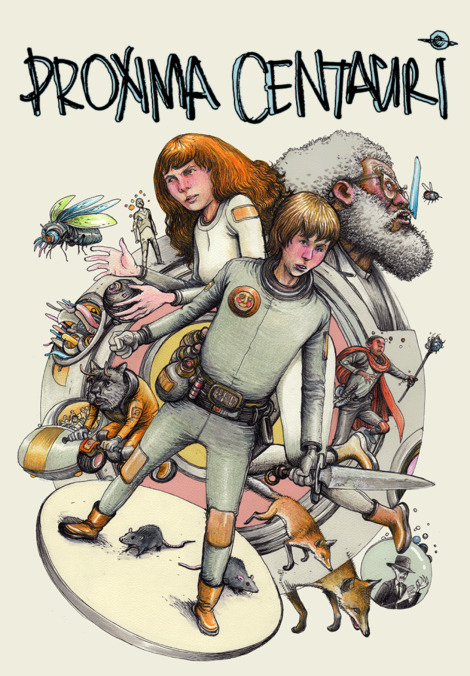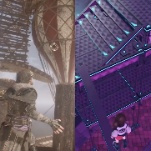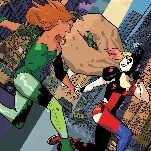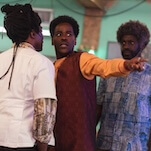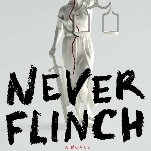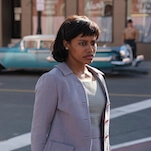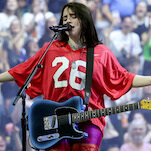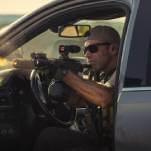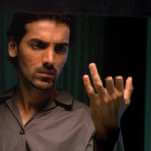This latter element is something that Oliver Sava broached in his review of Michel Fiffe’s recent collection, Zegas. “Comics,” Oliver writes, “are a two-dimensional medium, but within a page’s vertical and horizontal confines is a three-dimensional space that can be manipulated by visual storytellers. Not the depth within individual images, but the space surrounding the panels.” Like Fiffe, Dalrymple is one such accomplished cartoonist who uses space in this way.
In one specific example, Dalrymple features Sherwood passing through a series of doors. The sequence is contained in one long horizontal plane, but none of the images are explicitly cordoned into discrete panels. Unbound by borders, the eye first takes in the sequence as a single image before partitioning each into order. But time is already confused, a sensation heightened by the way Dalrymple draws Sherwood’s arm casually hanging, then raised, then hanging by his side again.
There is no sensation of movement or implication of rising and then falling; Sherwood’s arm in the final panel has yet to move, and it resists the kind of sequential ordering that the brain reflexively projects onto comics. In a subtle way, the sequence is disorienting, a sense that Dalrymple compounds by rendering space the way he does. Sherwood appears at once to move along a one-dimensional plane and into some three-dimensional compartment. In much the same way that he confuses time, Dalrymple also confuses space—forcing readers to subtly reorient themselves directionally and dimensionally. A character says that “time is confusing” and another claims that “space/time is affected by your bad decisions,” so it’s difficult not to read this all as intentional.
Related to this playful approach to space is Dalrymple’s equally free-spirited approach to narrative. Proxima Centauri takes place in the same world as The Wrenchies, and it prominently features some characters and plot devices from that earlier book. But when exactly this serial takes place is unclear, and the relationship between the events of this series and those of The Wrenchies is similarly vague. In fact, the plot of Proxima Centauri is vague, or perhaps more accurately, improvisational. The individual scene is privileged over unity. It sometimes makes each scene’s relation to one another challenging to parse, but it also makes reading the book a process of discovery. Much like Dalrymple’s other works, Proxima Centauri is as fun to read as it is dizzying, and it’s as dizzying to read as it is gorgeously drawn.
